White plumes of acid and fine shards of glass fill the Hawaiian sky over the east coast of Big Island as Lava from active fissures near the Leilani Estates subdivision gushes into the Pacific Ocean at 2 points along the coastline. The lava has completed nearly 4-mile crawl to meet the ocean, creating dangerous living conditions for residents in Kamaili, Seaview, and Malama Ki neighborhoods.
It was about 11 P.M. on Saturday night when the emergency management officials first confirmed that lava from fissure 20 has reached the ocean.
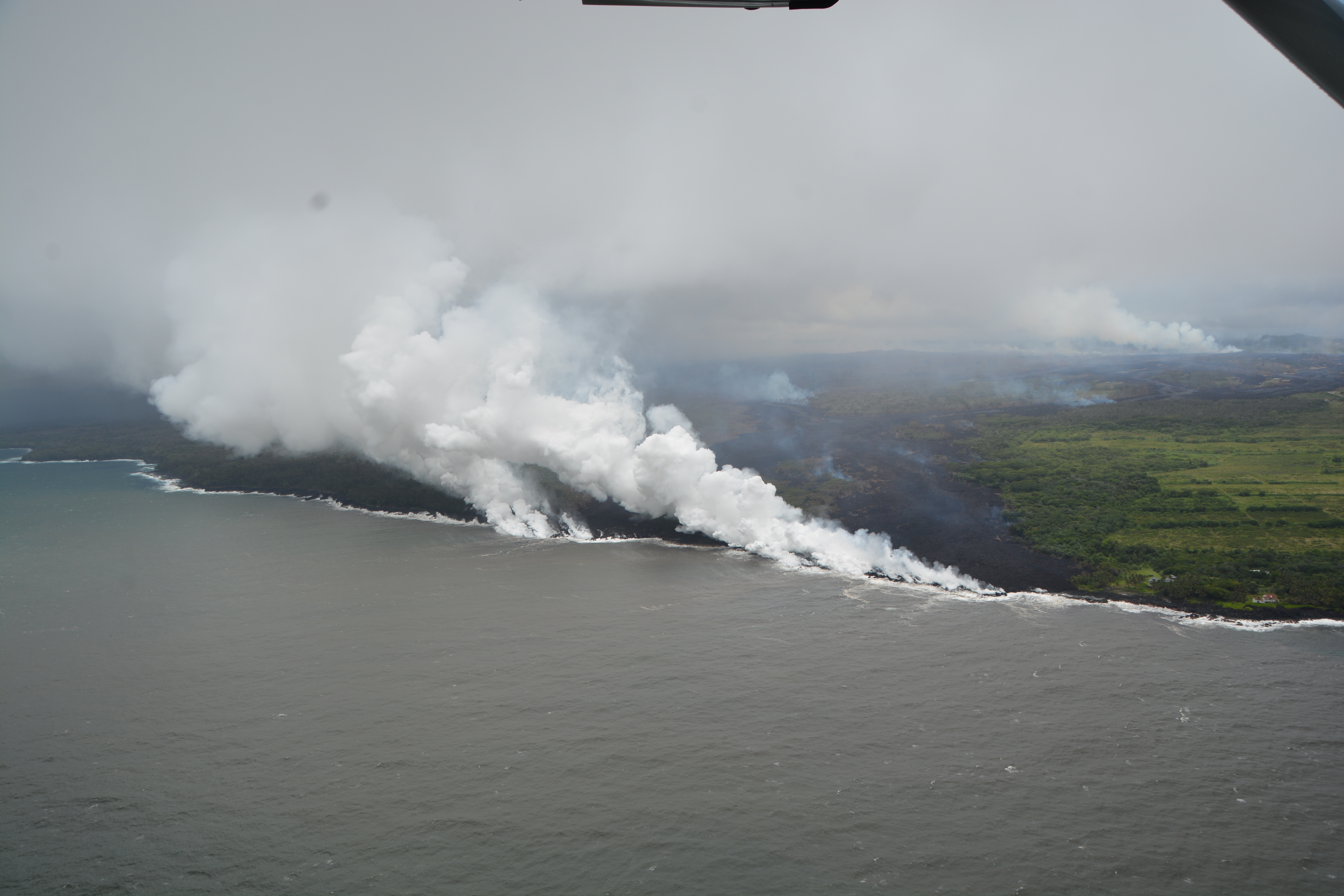 |
| Ocean entry photograph from Civil Air Patrol (CAP) overflight taken at about 12:50PM. |
The 20th fissure opened on May 15, 2018, in Kilauea's eastern rift zone and has been spewing lava since then. The lava flow suddenly increased beginning Friday, May 18 when the fissure 16 and fissure 20 merged resulting in a continuous line of splatter and fountaining.
The merger happened less than a mile from the coast and created a lava river that slowly meandered southward between Pohoiki and Opihikao Rds on its way towards the ocean.
USGS Video of lava fountain
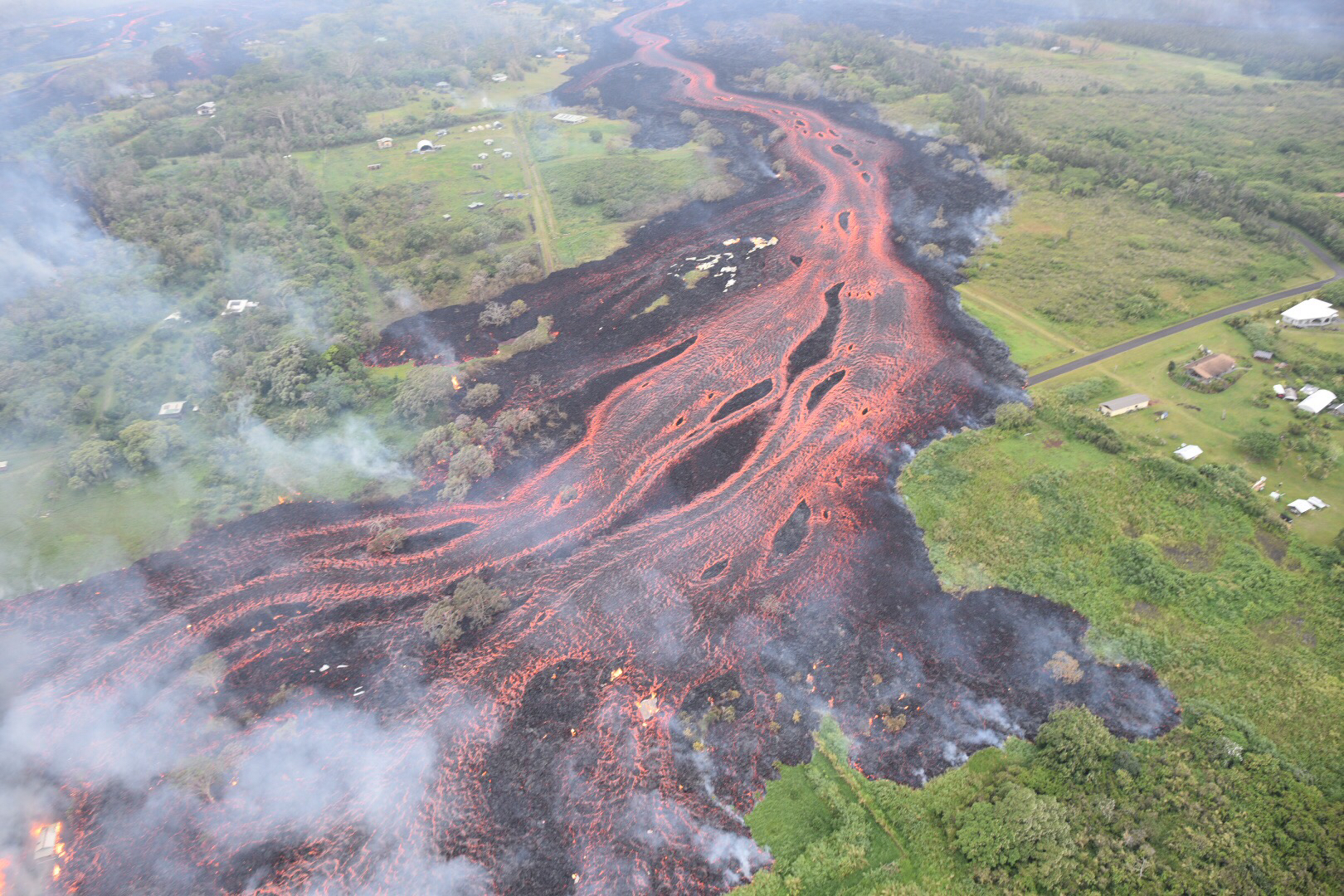 |
| The lava river |
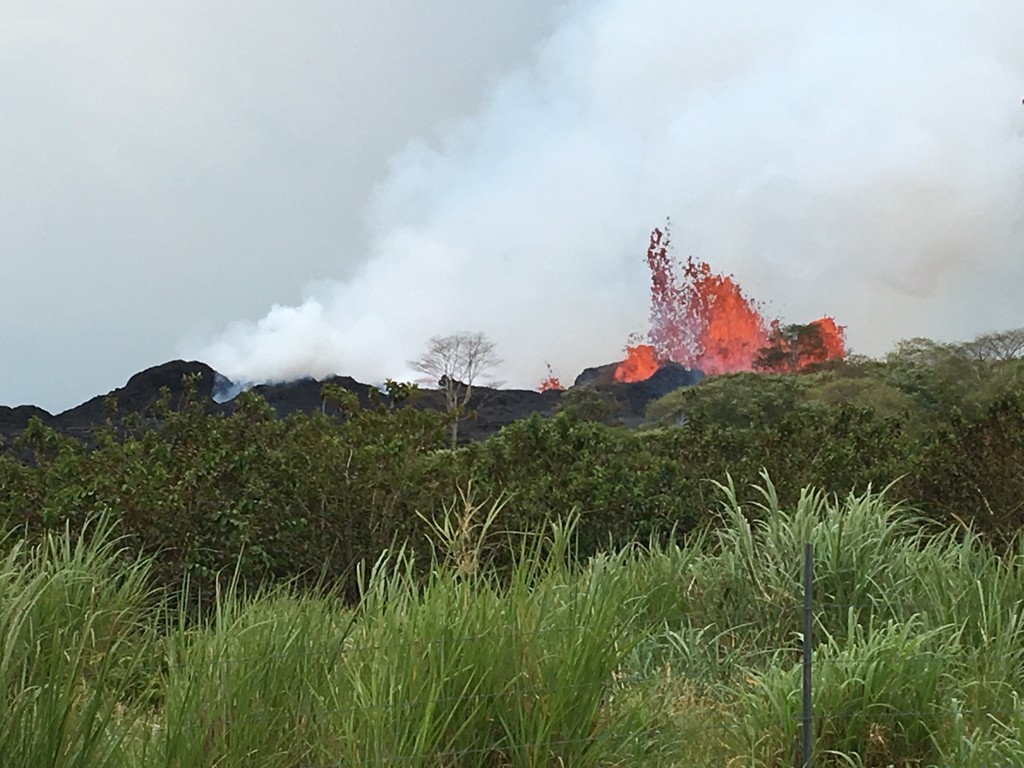 |
Lava fountain at fissure 22, 9:03 a.m. HST |
USGS Video of lava fountain
Meanwhile, a crack has opened under the east lava channel early Sunday morning diverting the lava from the channel into underground voids. This may stall the lava flow into the ocean.
The sudden increase in the volume of lava eruption from fissure 20 has tripled the volcanic gas emissions and SO2 concentration in the area downwind of the vents.
Seismic levels which abruptly decreased after explosive eruptions on Saturday afternoon and Sunday noon, are again slowly increasing along with continued deformation at the Kilauea summit.
A small explosion occurred at 12:55 AM at Halema'uma'u crater at Kilauea's summit. It produced an ash plume that reached about 7,000 ft and was carried by the wind to the southwest.
As the flow pours into the water and creates new land, officials are issuing new warnings about the threat for laze, the steam-like substance that rises from the ocean as the lava comes into contact with ocean water. Laze is a mix of hydrochloric acid, steam, and fine glass particles.
Laze plume travels with the wind and can cause lung damage, and eye and skin irritation.
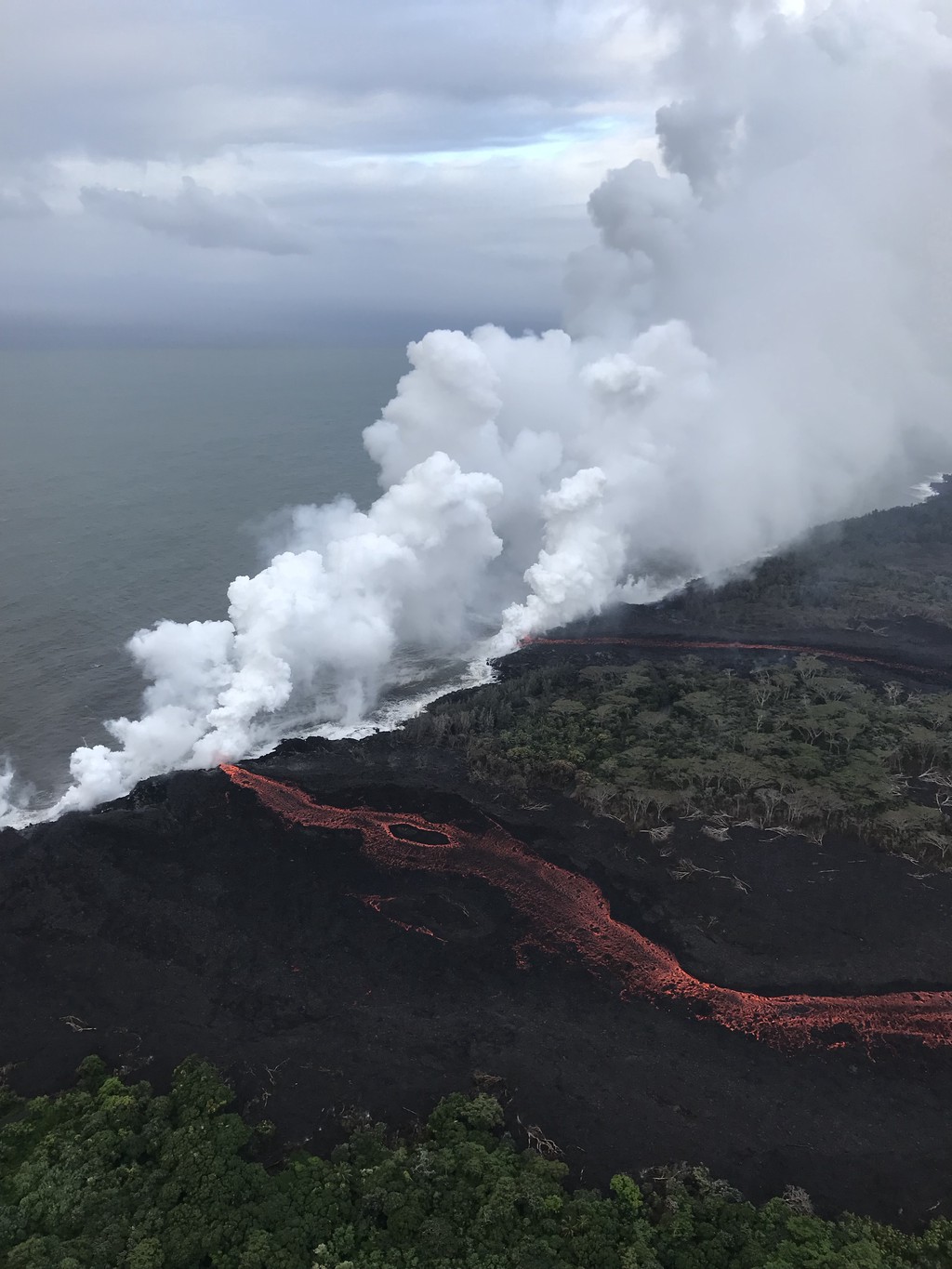
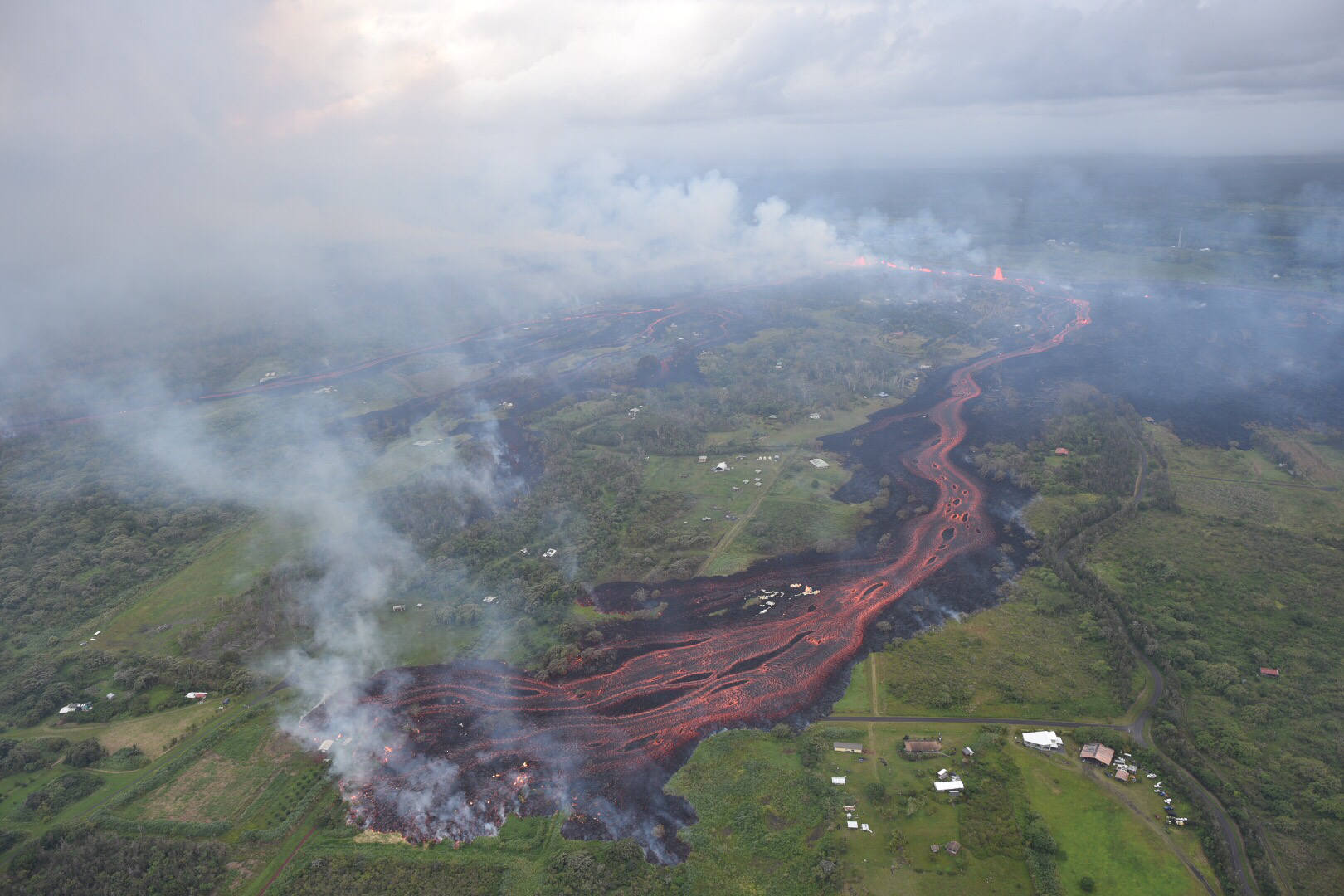

No comments:
Post a Comment